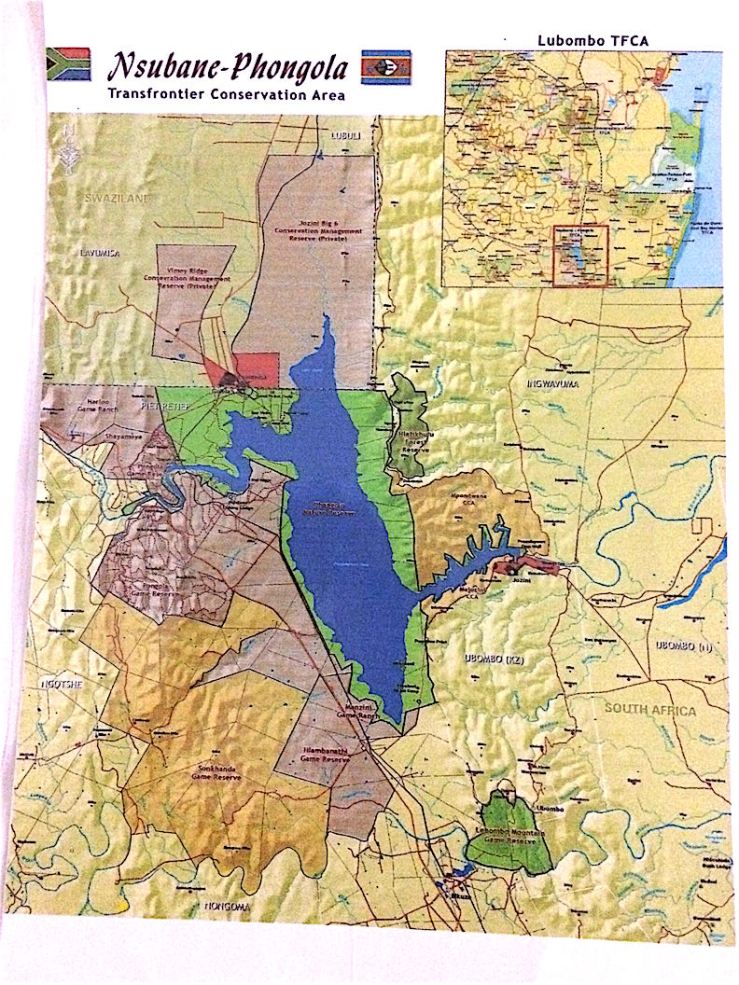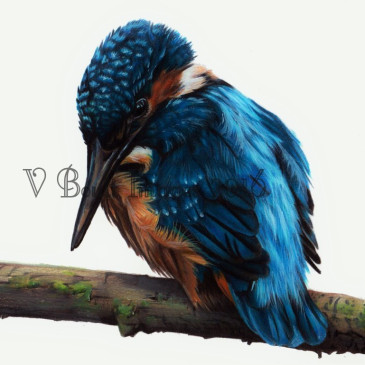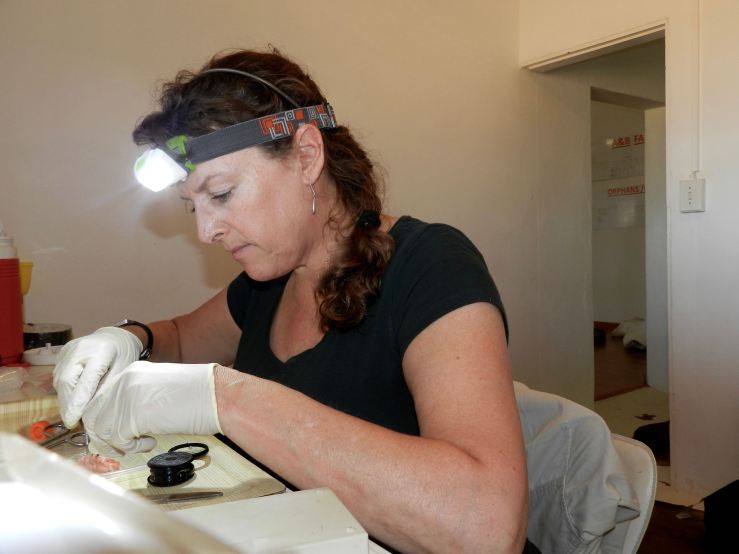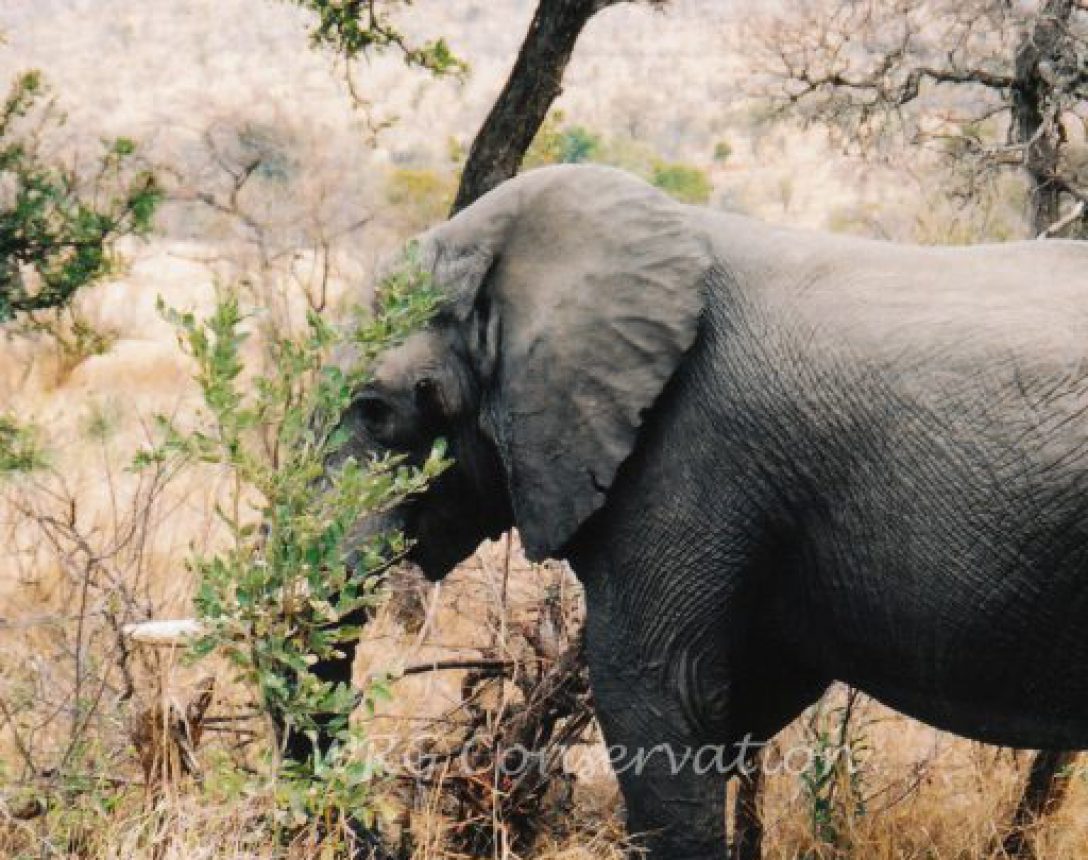So I’m in South Africa, in the middle of a wildlife reserve, drinking an after dinner glass of South African wine. But I’m also interacting with my students in my online course at the University of Guelph in Canada and also skyping into the recovery group meeting of the Vancouver Island marmot about the captive breeding/reintroduction program And during the (Canadian) lunch break I managed to get a picture of the ever elusive Cape porcupine we named Boris that visits our camp most evenings. Gotta love technology:)
Month: July 2017
Communication is everything!
When developing gamete rescue techniques for species vulnerable to extinction you rely on harvesting samples from prime breeding age animals that are legally hunted by people who like doing that type of thing. The conundrum is that if the species is vulnerable to extinction then it really shouldn’t be hunted. So my strategy is to develop some general techniques that work in a wide range of more common herbivore species in the hopes that the techniques would work well in an endangered animal that was recently poached. However, as is often the case, you have a plan and then you have reality and the two are not always the same. The fact is there is not much hunting in the part of the reserve I’m in. Pongola Game Reserve is a private reserve owned by a number of neighbouring land owners that agreed to drop their boundary fences and cooperatively manage the game reserve. The part I’m in is owned by a veterinarian and it has been in his family for many decades (see the BBC documentary ‘The Mission’ for his truly inspirational effort to bring elephants to the reserve). There is hunting on the neighbouring properties but communication with them is not always the best. So, for example, when I had one of our rangers talk to the neighbours’ rangers about testes collection they misunderstood and instead sent me the skin of the ball sac (scrotum) without the testes. Sigh….. So, note to self, if we pursue this line of research here in the future we need to improve communication with the neighbours.
The cost of wildlife research
One of the biggest challenges when doing wildlife research is making rent and paying your utilities. There are no industry profits to be made by saving endangered species and the research involved is not mainstream enough to get a lot of support from the typical research facilities like governments or universities so there are very few jobs with any security or a half-decent salary. This means if you are passionate and committed to saving wildlife then you will have to make sacrifices and be innovative in fundraising. Hence my creation of the non-profit WRG Conservation for fundraising for my research program. As someone who has made the sacrifices for a very long time and knows the cost of living for a cause I always want to try my best to make life a little easier for the next generation of individuals dedicated to wildlife conservation. Therefore I want to give a big plug for my colleague working in the neighboring reserve – Vicky Boult. Not only is she dedicated to the cause of wildlife conservation but she is also an incredible artist. Her work can be found at vickyboult.wordpress.com. Check it out. If you are interested in her work than you can be assured your money is going to help support a starving conservation biologist who will help make the world a better place for animals.

Giraffes versus chocolate
Driving back from town through the reserve and I came across these two giraffe having a ‘necking’ contest in the middle of the road. This is the way giraffes fight. I told them to get out of my way but they ignored me. It wasn’t until I drove right up to them that they moved. I have uploaded a video to the WRG Conservation facebook page of our encounter. But they did move out of my way eventually which is good because my chocolate was melting! 🙂
Males and their testosterone:/
I think most of you know that the primary reproductive hormone in males is testosterone. A certain baseline level is necessary for sperm production but most males have higher levels than needed for sperm production and those higher levels are responsible for libido, territoriality and aggression. Bull elephants take the excess of testosterone to a whole other level. Mature bull elephants go through an event called musth. It happens at various times of the year and can last days to months. During this time the bull is aggressive and psychotic (in my opinion). This is the time he establishes his dominance over other bulls in the area. It actually makes sense to some extent. Female elephants will allow breeding for about 2 days every five years so the male doesn’t want to have to establish his breeding rights over other bulls during that two days. It is best to settle the issue beforehand. HOWEVER, musth is a real pain when you are doing research on elephants. I’ve lost track of how many times the research plans with a bull elephant in a zoo have been put on hold because he came into musth. The same thing happens to research on wild elephants. Below is bull elephant in musth. Because he is so aggressive no-one has been able to get close to the herd to females to collect fecal samples or do detailed behavioural observations.
This is another bull elephant we saw today. He is not in musth so we were able to stay much closer to him. Actually he crossed the road behind the truck no more than 25 metres away. Unfortunately I was in the cab of the truck so I didn’t get a great picture. But you can see just how well they can blend in with the bush.
I’ll take an elephant over people any day
Today and tomorrow we are in our sister research camp in Swaziland for a change in scenery. And what a change it is. There used to be ~85 elephants in the Pongola reserve. However, during the drought last year they were able to get around the fences and a number of them headed north into an adjacent reserve in Swaziland. The elephant field expert, Heike, has been collecting fecal samples from these elephants for me for the past 2 years so we can look at their stress levels in response to the drought and how they have reacted to their relocation.
This elephant group includes one of the only recorded instances of twin elephant calves. You probably saw pictures all over facebook when they were born in Pongola a couple of years ago. They have grown up a bit but are still nursing from their mom Curve (see below). Elephant mammary glands are just under their front legs. Elephants have a unique and fascinating reproductive physiology. I could give you a lecture on it as it is my area of expertise but I’ll spare you. Suffice to say it is hypothesized that their unique estrous cycle evolved to prevent twinning so twins are almost unheard of. But here they are! They are even more special than you know as they are the last calves born to this large group because the males are now vasectomized.
You can see from the picture below just how much a size difference there is between the bull on the left and the fully grown females on the right.
The fact that these bulls are contracepted doesn’t stop the males from trying to breed and fighting to establish dominance. Here are two bulls having a wary crossing of paths at sunset. 
Sunrise…sunset, sunrise…sunset, swiftly flow the days
What are those eyes glowing in the dark?
I mentioned earlier that there are several animals that regularly visit the camp. Those include vervet monkeys, a warthog family and Horus the nyala bull. The owner of this portion of the reserve is a vet and when Horus was badly injured the vet had him fixed up. Now he appears to think humans at the research camp are a safe bet. However, when you are walking from the kitchen up to the museum in the dark and your flashlight catches his glowing eyes it can give you quite the fright!
In addition to investigating research possibilities I am also the field academic supervisor for seven of UK university students who are visiting this reserve with Operation Wallacea. They are using the data collected by students over many years in this reserve to write a senior paper on various aspects of conservation and management. Here they are up in a marula tree. When they are doing ground-based work (vegetation surveys) they have been instructed that having a climbable tree nearby is useful. A marula tree is an excellent climbing tree. AND its fruit makes an excellent liquor;)
Camera Traps are the BEST!
The reserve has several camera traps set up around artificial watering holes. This gives us the opportunity to see some of the animals who are either too shy, too fast or too nocturnal for good picture taking in person. Below we have an aardvark, a honey badger and a porcupine. Aardvarks are the true ecosystem engineers around here. Ecosystem engineers are animals that have a profound impact on the landscape beyond their role in the food chain. Beavers in North America are a good example with their dam building and resulting local flooding. Aardvarks eat primarily ants and termites and are diggers in a class of their own. They can dig a hole 1.5m deep in about 60 seconds. Luckily for everyone else (except maybe vehicle owners) they dig several burrows and these are used as homes by porcupines, warthogs, wild dogs and other species.
And then of course you have the funny cameos!
And some pictures that are just pretty:)
Aw NUTS – you mean I have to work?
Today I’m going to talk about one of the other research projects that I’m exploring in South Africa. Before I start I want to say that I passionately disapprove of hunting wildlife for any reason except imminent starvation. However, I don’t rule the world (lucky for some humans) so when life hands me lemons I make lemonade. In this case I’m talking about developing methods to rescue gametes (sperm in this case) from recently deceased wildlife. If you have an animal with genes that are particularly valuable to the population and it dies unexpectedly (from poaching or accident for example) then it would be useful if you could collect the sperm post-mortem, preserve it and use it to produce offspring via artificial insemination. But in order to develop these techniques it is necessary to have samples from animals that have died in the prime of their life. This rules out most zoo animals since they don’t usually die young and healthy. Therefore we are reliant on culled (hunted) animals to develop these gamete rescue protocols. While there is not much hunting on the reserve I’m in, there is a bit and so the rangers bring me the ‘bits’ after a hunt. The picture below is me removing epididymal sperm from the testes of a wildebeest that was culled. I then proceeded to run some experiments to determine the best way of preserving the sperm. I live such a glamorous life!





























